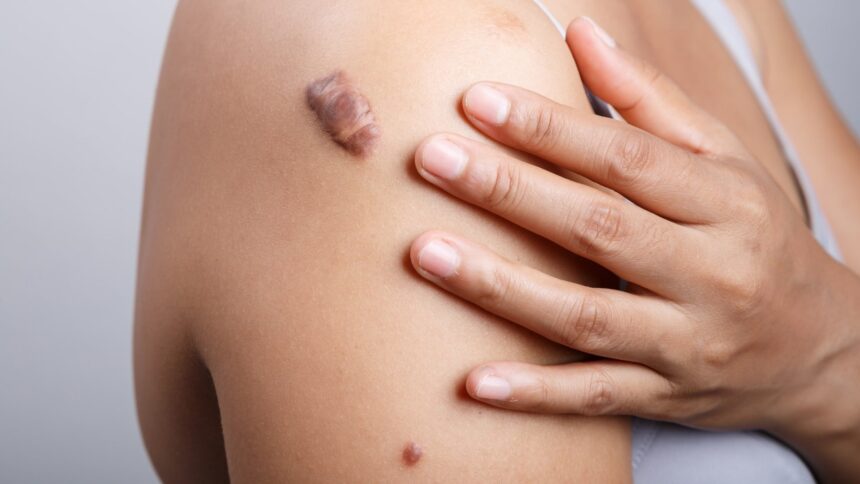Scars are a natural part of the healing process, but not all scars are the same. In some cases, the body produces excess collagen during healing, creating a raised, thick scar that grows beyond the boundaries of the original wound. This is called a keloid.
Keloids can form after even minor skin injuries and are often more than just a cosmetic concern—they can cause itching, tenderness, and, in some cases, limit movement if they form near a joint.
How Keloids Develop
When the skin is injured, the body repairs it by producing collagen fibers to close the wound. In normal healing, collagen production slows once the wound is closed. In keloid formation, however, collagen continues to build up, creating an overgrown scar that can become much larger than the original injury.
Keloids can take weeks or even months to appear after the injury, and once they develop, they may continue growing for years before stabilizing.
Common Causes and Risk Factors
Keloids can form after:
- Piercings
- Tattoos
- Burns
- Acne scars
- Surgical incisions
- Cuts and abrasions
Certain factors make some individuals more prone to keloid formation:
- Genetics – A family history of keloids increases the risk.
- Skin tone – Darker skin types are more likely to develop keloids.
- Age – They are most common in people aged 10 to 30.
- Injury type – Deeper or repeated trauma to the skin increases the likelihood.
Identifying Keloids
Keloids are usually easy to recognize. They are:
- Raised and firm to the touch
- Shiny or smooth on the surface
- Pink, red, brown, or darker than surrounding skin
- Larger than the original injury
- Often itchy, tender, or mildly painful
Treatment Options for Keloids
Although keloids are harmless in terms of health risk, many people seek treatment due to discomfort or cosmetic concerns. Several treatment approaches can help reduce their size and improve their appearance.
- Corticosteroid Injections
A common first-line treatment, steroid injections reduce inflammation and can flatten keloids over time. - Laser Therapy
Lasers can reduce redness, improve texture, and make keloids less noticeable. - Cryotherapy
This involves freezing the keloid with liquid nitrogen, which works best for smaller scars. - Surgical Removal
Cutting out a keloid can be effective, but recurrence is common unless combined with other treatments. - Silicone Sheets and Gels
These help flatten scars and reduce discoloration when used consistently. - Pressure Dressings
Special garments apply constant pressure to limit blood flow and slow scar growth.
Preventing Keloids
Prevention is especially important for those with a history of keloids. Helpful strategies include:
- Avoiding unnecessary piercings or tattoos.
- Treating acne quickly to prevent deep scarring.
- Protecting healing wounds from sun exposure and infection.
- Using silicone sheets during the healing process.
- Following medical advice after surgeries to minimize scar risk.
Living with Keloids
For many people, keloids can affect self-confidence, especially if they appear on visible areas such as the face, neck, or hands. While complete removal is challenging, treatments can make a significant difference in their appearance and comfort level.
Dermatologists can create a tailored treatment plan depending on the scar’s size, location, and severity. Support groups and counseling may also help those struggling with the emotional effects of living with keloids.
Final Thoughts
Keloids are a form of overgrown scar tissue caused by excessive collagen production during healing. While they can be persistent and sometimes return after treatment, modern medical options can improve their appearance and reduce discomfort. Preventive care is key for those prone to developing them, and early intervention often leads to the best results.


